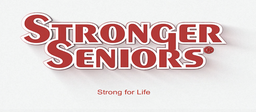Your nutritional needs have changed as you have become older. Your calorie needs decrease as you get older, but you may need more of certain food groups.

Calories: The amount of calories you need is dependent on how active you are physically. The government defines inactive lifestyles as those in which you only achieve daily living activities. If you exercise for a half an hour or more per day you are considered active. Your level of activity will determine whether you need more or fewer calories than what's recommended if you have been unable to maintain a healthy weight.
Men- an inactive older man needs around 2000 calories per day; if you are active shoot for 2400 calories per day.
Women- Consume 1600 calories daily if you are inactive, 2000 calories if you are an active female older adult.
Now here are some key nutrients you should pay attention to.
Protein- Healthy older men should try to consume 56 grams of protein per day from meat, fish, legumes and dairy. If you are an older female, try for 46 grams of protein daily.
Fiber- A variety of whole grains fruits and vegetables should help you get to the 28 G of daily fiber for an older adult male per day women, strive for 22 grams of fiber per day.
Vitamins and minerals- You are micronutrient requirements increase as you get older eat a variety of whole foods each day to help you meet your vitamin and mineral needs. Try to stay away from processed meals.
Aim for 800 units of vitamin D from fish, egg yolks, fortified foods and supplements everyday.
Production of stomach acid decreases as you age or take certain medications. If this is the case, you may be vitamin B12 deficient, possibly causing depression and fatigue. Supplements and fortified foods, i.e. orange juice, milk and yogurt are usually absorb B12 well.. You also need more vitamin B6 as an older adult. The recommendation is 1.7 mg daily if you are a man and 1.5 mg if you are a woman. Chicken, fish, potatoes and fruit will help you meet your vitamin B6 needs.
For a chart that will help you keep track of your nutritional intake, Click here. USDA Nutrition Chart
If eating food from a box- read the box and watch your sodium intake!


